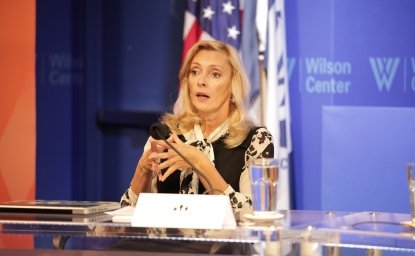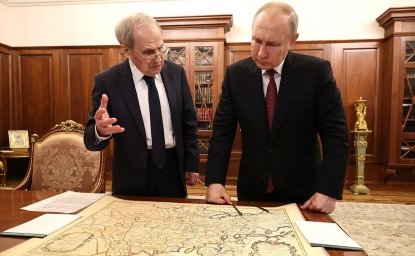Making International NGO Partnerships Work: Lessons from an American-Armenian Collaboration


Beginning in the mid-1980s, non-governmental organizations (NGOs) have been perceived by donors as being important actors in development, poverty alleviation, and as symbols of societal responsibility, democracy, and morality. In this brief I describe the experience of one of the most successful international NGO collaborations in Armenia that resulted in the opening of the Armenian American Mammography University Center in Yerevan. I will explain why and how this Center has been successful and what lessons can be learned from its experience.
The Armenian American Mammography University Center
The Armenian American Mammography University Center (AAMUC) was founded on 27 April 1997 through the efforts of the Armenian American Cultural Association, Inc. (AACA), which is a 501 (c) (3) non-profit based in Virginia and it's Yerevan-based partner, the Women's Health Care Association (WHCA) NGO. The AACA is the key U.S. sponsoring organization of AAMUC and WHCA is the parent organization in Armenia. AAMUC is governed by a seven-member board of Directors in Armenia composed of four WHCA members and three members of Yerevan State Medical University faculty.
The AAMUC, located on the campus of Yerevan State Medical University, is the first health facility of its kind in the former Soviet Union dedicated to providing women from the entire region with mammography and ultrasound technology for breast cancer screening. The three primary objectives of the AAMUC are to provide breast cancer screening and referrals to oncologists and specialists, to promote public health and education in relation to breast cancer, and to teach and train medical personnel. Since the opening of the AAMUC in 1997 through 30 December 2001 almost 30,000 women have benefitted from the services provided at this state-of-the-art medical facility and of these 30,000, over 1,500 women between the ages of twenty to seventy have been diagnosed with breast cancer (stages I IV), over 800 of whom have been treated and are now cancer free. The AAMUC is funded through the extensive grassroots fundraising campaigns undertaken by the AACA and with a USAID grant administered by the American International Health Alliance, Inc. This collaboration has led to the expansion of AAMUC's programs and activities in Armenia including the opening of two satellite clinics and the introduction of a mobile van unit.
Reasons for Success
1. Research to Identify and Define Local Needs
There are several reasons why the AAMUC has been successful and well received in Armenia. First, AACA leader, Rita Balian, who had been working on various philanthropic projects in Armenia since the early 1990s recognized that there was a problem with breast cancer when five of her friends in Armenia died of breast cancer in a short period of time. Since she knew many of the local NGO leaders, she began to ask these colleagues about the existing breast cancer screening facilities for women in Armenia and soon discovered that women in Armenia did not have access to quality early screening/detection facilities. The screening machines that did exist were so old that many women with early stage, small cancerous tumors were not correctly diagnosed while others with larger, benign tumors were diagnosed as having cancer and were being given unnecessary mastectomies. By conducting further research, Balian found that breast cancer was the leading cause of death of women in Armenia. At this point she began working with local partners, most prominently a Member of the Armenian National Assembly Mrs. Hranoush Hakobian, Ph.D., to establish the AAMUC to address this problem. Balian and Hakobian have been working separately and together for many years on social issues and had a knowledge and skills base from which to launch this project. Aware of the challenges they would encounter and the sources of support they could rely upon, they tapped into their respective social networks and garnered the necessary support to make the project operational.
2. Remaining Engaged in All Phases of the Project
The AACA leader, Rita Balian, has maintained an active engagement in the project and continues to visit Armenia several times each year in order to play an active part in AAMUC's development and expansion. Through her active participation in the project, Balian has worked to not only assist in the transfer of technological medical equipment and expertise, but also introduce patient-oriented models of healthcare, administrative techniques, and hygiene/sanitation standards. AAMUC's leadership has stressed the importance of treating patients with gentleness, kindness, and respect, maintaining accurate and comprehensive records (for the benefit of the Center as well as to provide accountability reports to interested parties), and maintaining a clean and sanitary facility. These approaches to patient care and administration/management differ from how physicians treated patients during Soviet times and how facilities were administrated and managed. By implementing such "patient oriented" methods of health care, AAMUC has won the trust of the public.
3. Winning the Trust of the Local Public and Institutions
The leaders of the AACA and the WHCA recognized the cultural beliefs, reservations, and concerns they would have to work with, and have found ways to operate within the existing local cultural paradigms by using appropriate and culturally informed discourses regarding the role of women in society to explain the importance of preventive care and early screenings for women. For instance, Balian, argues that, "Every time we save a mother, we save her entire family and thus we save the nation." By speaking about women's health as an issue of national importance and as a "family issue" she works within the dominant cultural paradigm and succeeds in getting through to local patients. Given the resistance to and animosity toward feminism in Armenia (as in many of the other states of the former Soviet Union), describing breast cancer as a public health and social problem rather than solely a "women's issue" assisted in the acceptance of the AAMUC project.
All these factors do not mean however that the group has not encountered the same type of resistance as many other new projects. On the contrary, when AAMUC began operating in 1997 it encountered a great deal of resistance from Armenia's medical establishment who rejected their "intrusion" into what they deemed their area of expertise. AAMUC won the trust of the public and overcame the resentment of the medical establishment by constantly disseminating information about the need for early detection through the local media, distributing literature in various places where women were likely to pick it up and read it, organizing annual health walks, scientific conferences, and giving talks at various institutions, university campuses, and women's organizations.
As a result of winning the trust of the public, the AAMUC has established itself as an important preventive health institution in Armenia and is now expanding its facilities, opening satellite clinics, and introducing new medical service protocols.
In promoting sustainable development, democracy, human rights, or any other worthwhile cause in the post-Soviet sphere, it is necessary to engage local NGO actors in dialogue, to have a long-term commitment and far-sighted objectives, and a willingness to accept the idea that there are multiple perspectives on any given topic and multiple ways of addressing any problem. AAMUC has been successful because it has identified and understood local needs and had a "hands-on" approach through all phases of the project.
Lessons Learned
By introducing Western technology (e.g., ultrasound and mammography equipment), new models of preventive health care and the treatment of patients, alongside working with local experts and within cultural frameworks, the leaders of the AAMUC have been quite successful in their efforts. The lessons donors and international NGOs can learn from the AAMUC experience are the following:

The Kennan Institute is the premier US center for advanced research on Eurasia and the oldest and largest regional program at the Woodrow Wilson International Center for Scholars. The Kennan Institute is committed to improving American understanding of Russia, Ukraine, Central Asia, the South Caucasus, and the surrounding region though research and exchange. Read more


